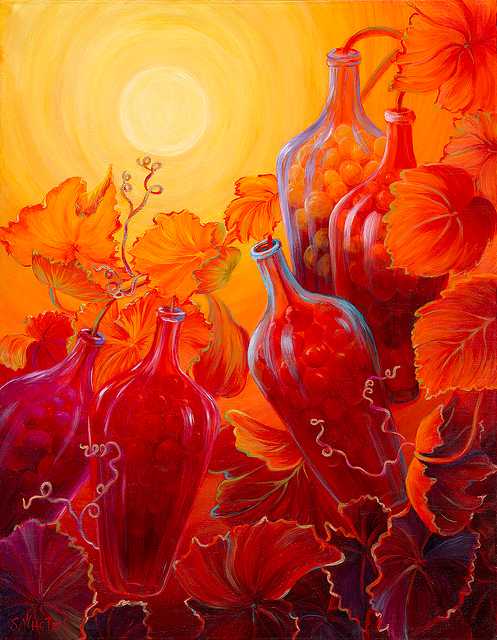FWP:
This whole ghazal is unusually lyrical and sensuous, isn't it? It has such flowingness that even to read it aloud is almost intoxicating. The evocative (and resonant) phrase bāl-kushā , literally 'wing-opening' or 'wing-spreading', appears in the first line of the first verse, {49,1}, and is echoed here. In English we speak of 'flights' of imagination, and of being 'high', so the metaphorical range comes through somewhat even in translation.
The word rang is also perfect, with its range of meaning from 'color' into realms of abstraction; for an example of even more multivalent use of this word, see {6,1}. When a 'wave of wine' opens its wings and prepares to take flight, what else except 'color, mood, style, nature' (any or all of them, of course) would be its 'royal feather', the longest feather in its wing? To personify an already metaphorical 'wave' of wine as a bird in flight is a creative feat of (doubly metaphorical) imagination in itself.
For more on the double meaning in the first line of baskih
, 'although' (as itself and as short for az-baskih ,
'to such an extent'), see {1,5}. In the present verse both possibilities are fully engaged by the second line. If we read it
as short for az-baskih , as in (1a), we see that the
blood-wine in the veins of the grape-vines (and what could be more vein-like
than a vine?) is so potent that because of its power it also becomes a kind
of wing of color and flight. If we read it as simply baskih
, 'although', as in (1b), we learn that even though wine has the (liquid)
form of blood in the vine-veins, nevertheless it also has the airy power of
feathers, wings, and flight.

"Wine on the Vine II" ©Sandi Whetzel
Nazm:
That is, the way blood flows in the veins, in the same way in the veins of grapevines runs the essence of wine, and because of it the grapevines flourish verdantly. Thus its running is flight, and its greenery and colorfulness are the royal-feather of flight. (46)
== Nazm page 45; Nazm page 46